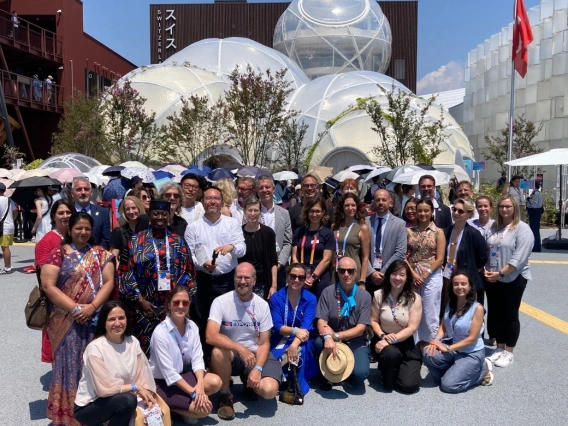Ketchup, the Telephone and Cherry Coke: CAPLA Scholar Explains How World's Fairs Bring Inventions to the Public
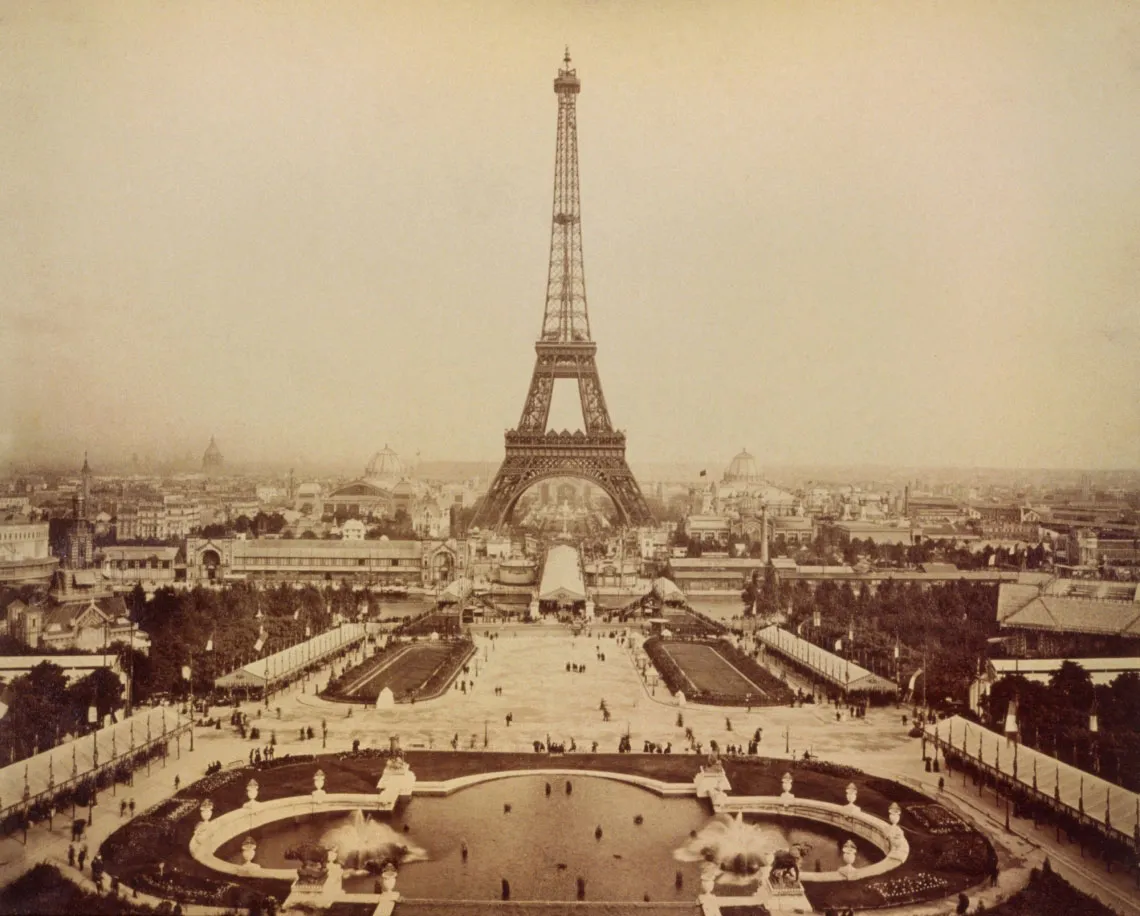
The Eiffel Tower, built specifically for Paris's Exposition Universelle in 1889, was the tallest tower in the world at the time. Photo courtesy University of Arizona News.
That half-empty bottle of Heinz ketchup in your fridge can be traced back to a fair in Philadelphia in 1876.
That was the year that an international exposition—the Centennial Exhibition of Arts, Manufactures and Products of the Soil and Mine, as it was officially known—took over the city for six months, showcasing the industrial power of the United States. In addition to the H.J. Heinz Company's exhibit, the event also featured a new-fangled device that its creator, Alexander Graham Bell, called the telephone.
International expositions, or world's fairs, have a 170-year history of introducing the global public to products and innovations that have become ubiquitous. The events are still held today; the 2020 World Expo in Dubai, Saudi Arabia, which was rescheduled due to the pandemic, kicked off in October 2021 and is set to end on March 31.
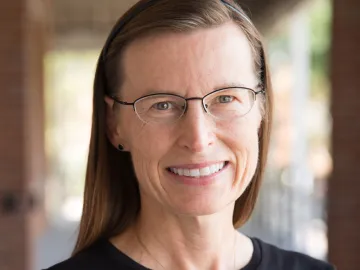
Lisa Schrenk, Associate Professor of Architectural History.
Lisa Schrenk, a University of Arizona associate professor of architectural history in the College of Architecture, Planning and Landscape Architecture, researches world's fairs. She helped establish the Institute for the Study of International Expositions, known as ISIE, an independent network of scholars and enthusiasts interested in the cultural impacts of world's fairs.
ISIE will hold the first of what's intended to be an annual symposium on March 24-25. The online symposium will feature talks by:
- Sarah Moore, professor in the UArizona School of Art, who will discuss the 1901 World's Fair's Temple of Timber through the lenses of colonialism and ecocriticism
- Robert Rydell, a leading scholar on international expositions
- ∫, a former Minnesota secretary of state who is leading a bidding effort to bring the 2027 world's fair to Minnesota
Schrenk talked to University of Arizona News about the impact world's fairs have had on society, why she's helping establish a community dedicated to studying the events and how she's involving UArizona students in that work.
For the uninitiated, what are international expositions, also known as world's fairs?
Since the Great Exhibition held at London's Crystal Palace in 1851, international expositions have acted as mirrors of concurrent political, cultural and technological conditions of the times in which they were held by attracting governments, companies and other organizations from across the globe interested in promoting national identities, celebrating culture and showcasing scientific, technological, economic and social progress. These events also serve as places of popular entertainment.
To help regulate world expositions, the Bureau of International Expositions was established in Paris in 1928. Since 1972, there have been two major categories of official expositions overseen by the bureau: World Expos, held in years ending in "0" and "5," that last up to six months with most countries designing and building their own pavilions; and smaller Specialized Expos, held between each of the World Expos. Specialized Expos present a clear theme, last no longer than three months, and are limited in size to 25 hectares (about 62 acres) with the host organization providing all of the exhibit space.
Although the last international exposition in the U.S. was Expo 1982 in Knoxville, Tennessee, world's fairs are still being held. I recently visited the delayed Expo 2020, which is currently underway in Dubai and closes at the end of this month.
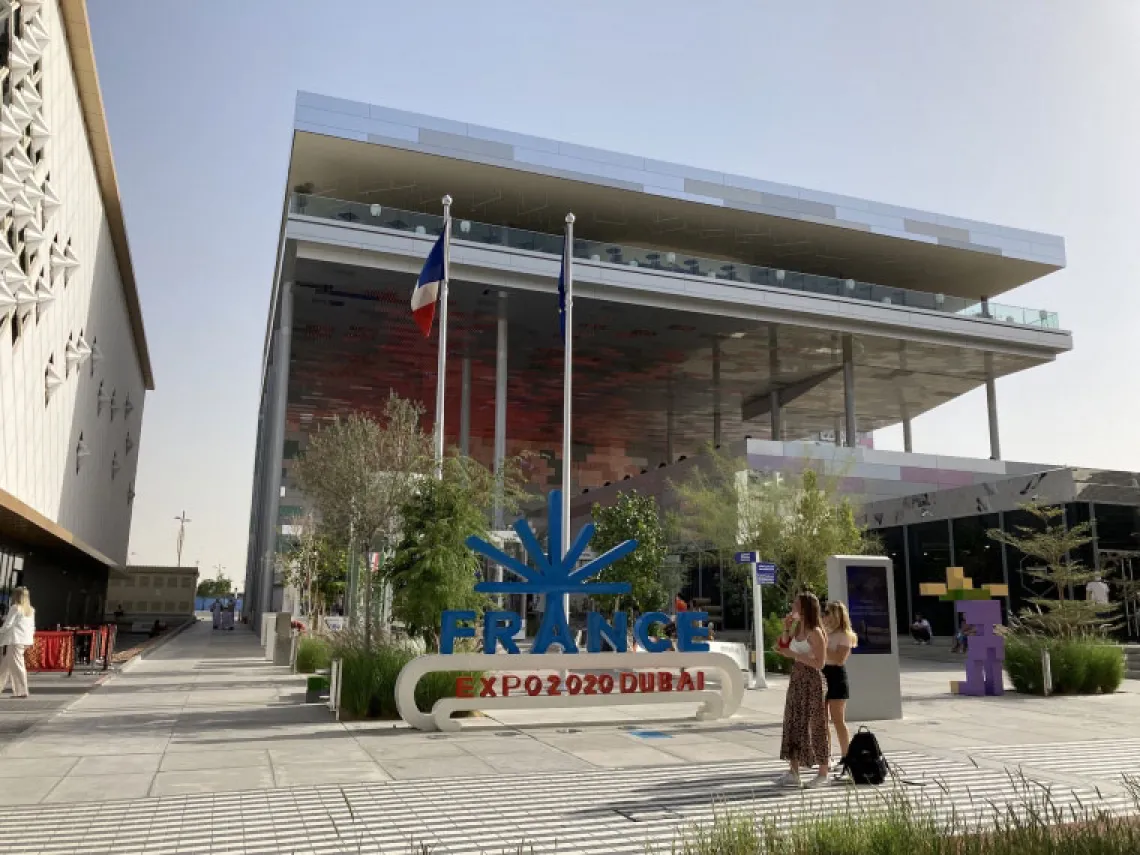
The entrance to the France Pavilion at Expo 2020 Dubai, which was postponed and held from October 2021 to the end of this month. Photo by Lisa Schrenk.
How many have you personally attended?
Including my recent visit to Expo 2020, I have attended six expositions. The other five were Expo 2000 in Hannover, Germany; Expo 2005 in Aichi, Japan; Expo 2010 in Shanghai, China; Expo 2015 in Milan, Italy; and Expo 2017 in Astana, Kazakhstan. In connection to my research on post-exposition fairgrounds, I have visited 26 additional fairgrounds, including sites in Paris, France; Osaka, Japan; Rio de Janeiro, Brazil; Montreal, Canada; and Zaragoza, Spain.
Highlights of my time in Dubai include participation in USA Day at the fair and being able to attend the incredibly inspiring conclusion of the expo's International Women's Day celebration.
What impacts do world's fairs have on society? Can you give some examples of everyday items or innovations that originated at world's fairs?
World's fairs have major lasting impacts on society by presenting ideas, concepts and products to the public. Expo 1855 in Paris, for example, marked the debut of the Colt revolver. In Philadelphia, at Expo 1876, Alexander Graham Bell exhibited the telephone alongside exhibits for Heinz Tomato Ketchup and Hires Root Beer. The 1893 Columbian Exposition in Chicago introduced the Ferris wheel to the world, along with Cracker Jack, Quaker Oats, Juicy Fruit chewing gum and the zipper.
The 1933-34 exposition, titled "A Century of Progress" and also held in Chicago, introduced modern building forms, materials and construction processes to millions, both at the fairgrounds and beyond through articles in architecture trade publications and other forms of mass media.
International expositions held in the years after World War II became centers of Cold War propaganda and the promotion of advances in the Space Race, especially by the U.S. and the Soviet Union, including through the display of satellites, space capsules and lunar landers. Pavilions at Expo 1970 in Osaka highlighted various building technologies that grew out of innovations developed in the aeronautical industry, including space frames, pneumatic structures, prefabricated capsules and newly developed materials like fiberglass.
The world saw the touchscreen phone and Cherry Coke for the first time at Expo 1982 in Knoxville.
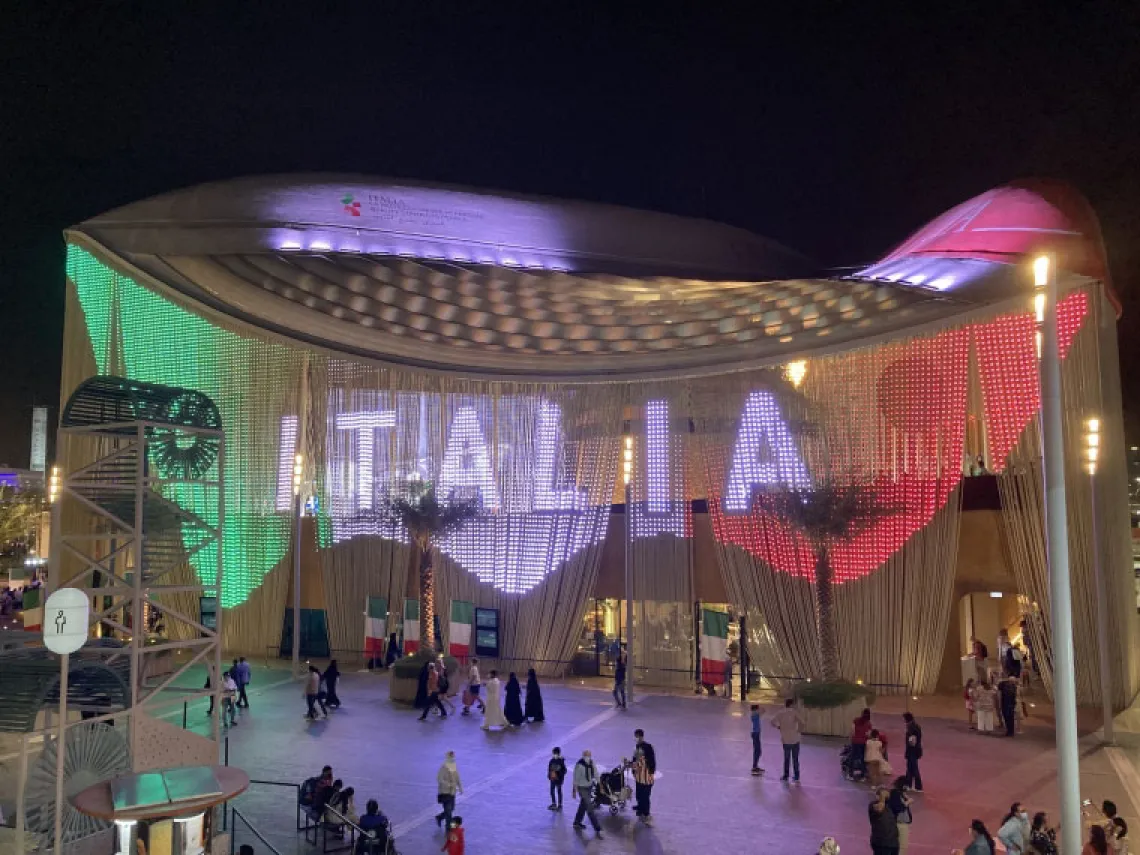
The entrance to Expo 2020 Dubai's Italy Pavilion. Photo by Lisa Schrenk.
Why is it important to have an organization dedicated to studying world's fairs?
World's fairs offer valuable insights into modern human developments as they provide vertical strokes in the timeline of history, allowing for broad interdisciplinary explorations. Because exposition scholars are scattered across a wide range of disciplines, we often are not aware of the work of others. A major goal of ISIE is to serve as a networking avenue for scholars and enthusiasts. It also seeks to emphasize new and developing strategies for research, curation and preservation as it facilitates both scholarly and popular understandings of the significance of these global events.
There's an effort to bring a world's fair to the Minneapolis area in 2027. How are you and your students involved in that?
I have been a regular contributor to Minnesota's effort to bring a world's fair to the Twin Cities area since 2015. If the state receives the bid for Expo 2027, it will the first exposition held in the United States in over 40 years. With funding from UArizona Student Engagement and Career Development, CAPLA and the School of Architecture, I have been able to teach two seminars connected to Minnesota's bid efforts, the second co-taught with Altaf Engineer, an assistant professor of architecture.
Students in these courses traveled to Minnesota to meet with organizers and architects involved in the bid and then carried out a major class research project. The first project was on expositions gateways, exploring ways to improve the visitor's entrance experience at a fair. The second focused on how to incorporate the future 2027 exposition's theme, "Healthy People, Healthy Planet: Wellness and Well-Being for All," in engaging ways both on and beyond the fairgrounds. Both classes led to the publication of books presenting the students' research and design work that have been extremely well received by the organizers and others.

